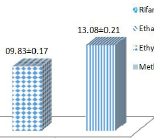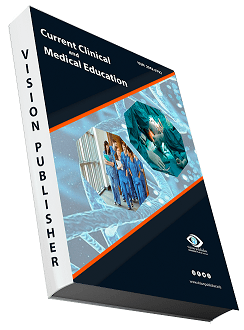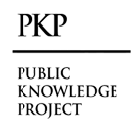Characterization of Bioactive Volatile Metabolites Released from Streptococcus pneumoniae and Evaluation of Antibacterial activity Using Four Medicinal Plants
Keywords:
Streptococcus pneumoniae, Secondary metabolites, Antibacterial, GC/MS.Abstract
The gram-positive bacterium Streptococcus pneumoniae is responsible for a number of serious diseases such as pneumonia, septicemia and meningitis. When it comes to pneumococcal pathophysiology, host nutrients including purines, pyrimidines, amino acids and carbon sources are absolutely crucial. If we want to know how S. pneumoniae adapts to the host environment during infection and find new therapeutic targets, we need to investigate its metabolism. The purpose of this study was to investigate the antibacterial effects of the medicinal herbs Equisetum arvense, Althaea rosea, Nigella sativa and Foeniculum vulgare by analyzing the bioactive volatile compounds generated by Streptococcus pneumoniae. GC-MS analysis of Streptococcus pneumoniae found: ethyl 2-methoxycarbonyloxytetradecanoate, ethyl-N-ethoxycarbonylcabamate, prop-2-enylnonanoate, butane, 1,1-dibutoxy-3-methyl, ethanol, 2,2'-oxybis -, diacetate , hexadecane, butanedioic acid, diethyl ester, 4-methylthio-4-methyl-2-pentnone, 1-phenylethyl hydroperoxide, p-dioxne, methylene. Bioactivity of the ethanol extract of the bacterial product Streptococcus pneumoniae against four microorganisms Bacillus cereus (18.01±0.07, 11.90±0.03, and 15.88 ±0.04), Klebsiella pneumoniae (15.00±0.04, 10.05±0.02, and 12.07±0.04), Staphylococcus epidermidis (17.43±0.06, 14.20±0.04, and 13.34±0.04), Enterobacter aerogenes (16.20±0.07, 11.03±0.02, and 14.52±0.03). In Figure 1, 2, 3, and 4, the metabolites of Streptococcus pneumoniae demonstrated a noteworthy level of action against Bacillus cereus, (18.01±0.07).
Downloads
References
Leonard, A et al. Metabolic inventory of Streptococcus pneumoniae growing in a chemical defined environment.Int J Med Microbiol. 2018.
Härtel T, et al. Impact of glutamine transporters on pneumococcal fitness under infection-related conditions. InfectImmun. 2011;79:44–58.
Hoskins J, et al. Genome of the bacterium Streptococcus pneumoniae strain R6. J Bacteriol. 2001;183:5709–17.
Lynch JP, Zhanel GG. Streptococcus pneumoniae. Epidemiology, risk factors, and strategies for prevention.Semin Respir Crit Care Med. 2009;30:189–209.
CCME 2 (4), 21-28 (2024) VISION PUBLISHER|28
Waterer GW, Somes GW, Wunderink RG. Monotherapy may be suboptimal for severe bacteremic pneumococcalpneumonia. Arch Intern Med. 2001;161:1837–42.
Weiss K, et al. Clinical characteristics at initial presentation and impact of dual therapy on the outcome ofbacteremic Streptococcus pneumoniae pneumonia in adults. Can Respir J. 2004;11:589–93.
Martínez JA, et al. Addition of a macrolide to a beta-lactam-based empirical antibiotic regimen is associated withlower in-hospital mortality for patients with bacteremic pneumococcal pneumonia. Clin Infect Dis. 2003;36:389–95.
Gonçalves VM, Zangirolami TC, Giordano RLC, Raw I, Tanizak MM, Giordano RC. Optimization of mediumand cultivation conditions for capsular polysaccharide production by Streptococcus pneumoniae serotype23F. Appl Microbiol Biotechnol. 2002;59:713–717.
Balachandran P, Hollingshead SK, Paton JC, Briles DE. The autolytic enzyme LytA of Streptococcuspneumoniae is not responsible for releasing pneumolysin. J Bacteriol. 2001;183:3108–3116.
Yang, S.C.; Lin, C.H.; Sung, C.T.; Fang, J.Y. Antibacterial Activities of Bacteriocins: Application in Foods andPharmaceuticals. Front. Microbiol. 2014, 5, 241.
Magashi, A.M.; Bukar, A.; Omola, E.M.; Halima, B.A.; Hadiza, M.S. Bacteriocin and its application—A review.Int. J. Adv. Acad. Res. Sci. Technol. Eng. 2019, 5, 242–256.
Wiegers, C.; van de Burgwal, L.H.M.; Larsen, O.F.A. Probiotics for the Management of Infectious Diseases:Reviewing the State of the Art. Front. Microbiol. 2022, 13, 877142.
Ramirez-Olea, H.; Reyes-Ballesteros, B.; Chavez-Santoscoy, R.A. Potential Application of the Probiotic Bacilluslicheniformis as an Adjuvant in the Treatment of Diseases in Humans and Animals: A Systematic Review. Front.Microbiol. 2022, 13, 993451.
Chrolavicius, S. Effects of pretreatment with clopidogrel and aspirin followed by long-term therapy in patientsundergoing percutaneous coronary intervention: The PCI-CURE study. Lancet 2001, 358, 527–533.
Shankar, S, Rangarajan R, Sarada D. Evaluation of Antibacterial Activity and Phytochemical Screening ofWrightia Tinctoria L. Pharmacogn. J. 2010, 2, 19–22.
Lewis, K.; Ausubel, F.M. Prospects for Plant-Derived Antibacterials. Nat. Biotechnol. 2006, 24, 1504–1507.[CrossRef]
Ody, P. The Complete Medicinal Herbal: A Practical Guide to the Healing Properties of Herbs; SkyhorsePublishing Inc.: New York, NY, USA, 2017; pp. 1–271.
Ruddaraju, L, Pammi, S, Guntuku, G. A Review on Anti-Bacterials to Combat Resistance: From Ancient Era ofPlants and Metals to Present and Future Perspectives of Green Nano Technological Combinations. Asian J.Pharm. Sci. 2020, 15, 42–59.
Reker, D, Perna, A, Rodrigues, T. Revealing the Macromolecular Targets of Complex Natural Products. Nat.Chem. 2014, 6, 1072–1078.
Almabruk, K, Dinh, L, Philmus B. Self-Resistance of Natural Product Producers: Past, Present, and FutureFocusing on Self-Resistant Protein Variants. ACS Chem. Biol. 2018, 13, 1426–1437.
Arima, H.; Ashida, H.; Danno, G. Rutin-Enhanced Antibacterial Activities of Flavonoids against Bacillus cereusand Salmonella enteritidis. Biosci. Biotechnol. Biochem. 2002, 66, 1009–1014..
Assob, J.C.N.; Kamga, H. Antimicrobial and Toxicological Activities of Five Medicinal Plant Species fromCameroon Traditional Medicine. BMC Complement. Altern. Med. 2011, 11, 70.
Radulovi´c, N.S.; Blagojevi´c, P.D.; Stojanovi´c-Radi´c, Z.Z.; Stojanovi´c, N.M. Antimicrobial Plant Metabolites:Structural Diversity and Mechanism of Action. Curr. Med. Chem. 2013, 20, 932–952.
Saleem, M, Nazir, M, Ali, M. Antimicrobial Natural Products: An Update on Future Antibiotic Drug Candidates.Nat. Prod. Rep. 2010, 27, 238–254.
Vadhana, P.; Singh, B.; Bharadwaj, M.; Singh, S. Emergence of Herbal Antimicrobial Drug Resistance in ClinicalBacterial Isolates. Pharm. Anal. Acta 2015, 6, 1–7.

Downloads
Published
How to Cite
Issue
Section
License

This work is licensed under a Creative Commons Attribution 4.0 International License.
Current Clinical and Medical Education










